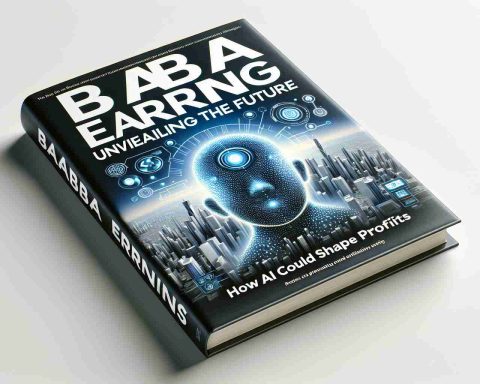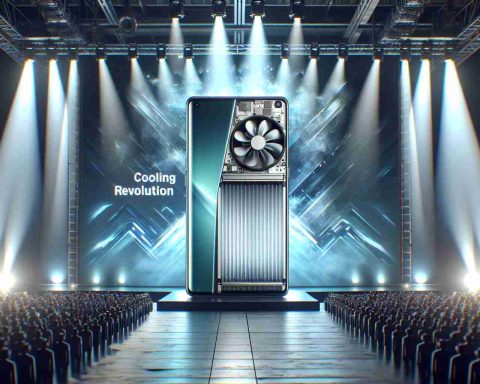- Nvidia shares have skyrocketed over 22,000% in the past decade.
- The company has achieved a market cap of $3 trillion, driven by AI advancements.
- Leading tech firms, including Alphabet and Amazon, invest heavily in Nvidia’s GPUs for AI applications.
- Despite high investments by major companies like Meta, the profitability of AI spending remains uncertain.
- Nvidia’s revenue increased by 94% to $35.1 billion, showcasing strong demand for data center chips.
- Future product launches featuring the Blackwell GPU architecture are expected to sustain growth.
- Investor sentiment is mixed due to high expectations and concerns over ongoing AI investments.
- Nvidia’s forward P/E ratio of 29 suggests that future returns may be less explosive.
Nvidia’s meteoric rise is nothing short of astounding, with shares jumping over 22,000% in the last decade. As the tech titan now boasts a staggering $3 trillion market cap, many are questioning whether its AI-fueled growth can continue.
The buzz around artificial intelligence has drawn enormous investments, particularly after OpenAI unveiled ChatGPT. Major players like Alphabet and Amazon have eagerly embraced Nvidia’s cutting-edge GPUs to power their AI ambitions. For hyperscalers, this investment pays off as they rent AI capabilities via their cloud platforms. However, not all companies share the same fate; with Meta Platforms set to pour up to $65 billion into AI, investors are beginning to wonder if these expenses will yield concrete returns.
Despite speculation about a slowdown, Nvidia’s recent financial performance paints a different picture. In just the last quarter, revenue surged by 94% to $35.1 billion, driven by insatiable demand for its powerful data center chips. Its impressive gross margins of nearly 75% underscore its competitive edge. As new products based on the innovative Blackwell GPU architecture roll out, Nvidia seems poised to maintain its operational momentum.
Yet, with high market expectations and concerns about future AI spending, the question remains: Are Nvidia’s glory days behind? The stock’s valuation, while attractive with a forward P/E of 29, indicates that those sky-high returns may be a thing of the past. Investors seeking new opportunities in the AI landscape might want to explore other, less spotlighted avenues.
Is Nvidia’s AI Growth Sustainable? The Future of a Tech Giant!
The Surge of Nvidia: An Overview
Nvidia’s stunning journey in the stock market—boasting a 22,000% increase over the past decade—has positioned it as a powerhouse in the tech industry, particularly in the realm of artificial intelligence (AI). With a market cap now at $3 trillion, many industry watchers are pondering the sustainability of this growth. Firms like Alphabet and Amazon are heavily investing in Nvidia’s cutting-edge GPUs to bolster their AI initiatives. However, questions linger about whether massive investments in AI by companies like Meta Platforms—projected at up to $65 billion—will translate into tangible returns.
Key Information About Nvidia’s AI Ecosystem
– Revenue Growth: Nvidia experienced an incredible 94% increase in revenue last quarter, reaching $35.1 billion. This growth was primarily fueled by a skyrocketing demand for its data center chips.
– Gross Margins: The company’s gross margins are reported at nearly 75%, showcasing its strong competitive position within the AI and technology markets.
– Product Innovations: Nvidia’s Blackwell GPU architecture is set to introduce new products that further enhance its offerings. This consistent innovation is crucial in maintaining its growth trajectory.
Key Questions and Answers
# Q1: What are the main drivers of Nvidia’s recent revenue surge?
A1: The key drivers include unprecedented demand for data center chips, which are essential for AI applications and cloud computing. Nvidia’s ability to continually innovate and release advanced GPU architectures has placed it at the forefront of this increasing market need.
# Q2: How does Nvidia’s financial performance compare with that of its rivals in AI?
A2: Nvidia’s gross margins of nearly 75% significantly outperform many competitors, suggesting efficient operations and a strong pricing strategy. While rivals like Meta and Alphabet invest heavily in AI, Nvidia has thus far demonstrated superior revenue growth and profitability, indicating a robust competitive edge.
# Q3: What are the risks associated with investing in Nvidia at this stage?
A3: Potential risks include market saturation, high investor expectations, and the uncertainty surrounding future AI spending. With a forward P/E ratio of 29, investors must consider whether the current valuation reflects sustainable growth or if it indicates a looming market correction.
Additional Insights
– Market Forecasts: Analysts speculate that Nvidia’s growth may stabilize, but the demand for AI-related technology remains high. This could lead to a more gradual growth pattern moving forward.
– Trends in AI Spending: Despite fears of a potential slowdown, AI investments across various sectors are expected to rise. Companies that effectively integrate these technologies will likely sustain demand for Nvidia’s products.
– Sustainability and Innovation: Nvidia is also emphasizing sustainable practices in its manufacturing, aiming to reduce its carbon footprint while expanding its product line. This aligns with an increasing focus on sustainability across the tech industry.
Suggested Related Links
– Visit Nvidia’s Official Site
– Visit Alphabet’s Official Site
– Visit Amazon’s Official Site
In conclusion, while Nvidia faces challenges ahead, its established market position and ongoing innovation may provide a path for sustained growth in the AI sector. Investors should remain vigilant and consider the broader market dynamics as they weigh their options in this rapidly evolving industry.



















